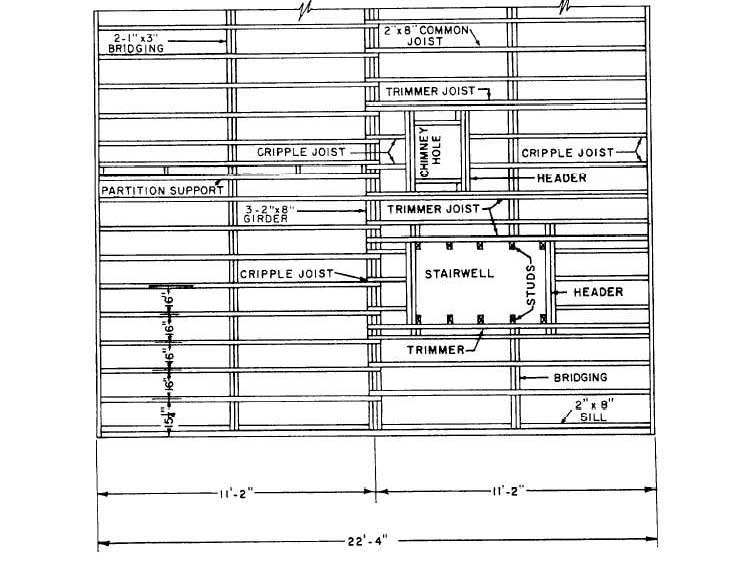
Figure 2-14. - Floor framing plan.
The unbroken, double-line symbol is used to indicate joists, which are drawn in the positions they will occupy in the completed building. Double framing around openings and beneath bathroom fixtures is shown where used. Bridging is shown by a double-line symbol that runs perpendicular to the joists. The number of rows of cross bridging is controlled by the span of the joists; they should not be placed more than 7 or 8 feet apart. A 14-foot span needs only one row of bridging, but a 16-foot span needs two rows.
Notes are used to identify floor openings, bridging, and girts or plates. Nominal sizes are used in specifying lumber. Dimensions need not be given between joists. Such information is given along with notes. For example, 1" x 6" joists @ 2'-0" cc indicates that the joists are to be spaced at intervals of 2 feet 0 inches from center to center. Lengths might not be indicated in framing plans. If you find this to be the case, the overall building dimensions and the dimensions for each bay or distances between columns or posts provide such information.
ROOF PLANS. - Framing plans for roofs are drawn in the same manner as floor framing plans. A Builder should visualize the plan as looking down on the roof before any of the roofing material (sheathing) has been added. Rafters are shown in the same reamer as joists.
SHOP DRAWINGS
Shop drawings are sketches, schedules, diagrams, and other information prepared by the contractor
Continue Reading